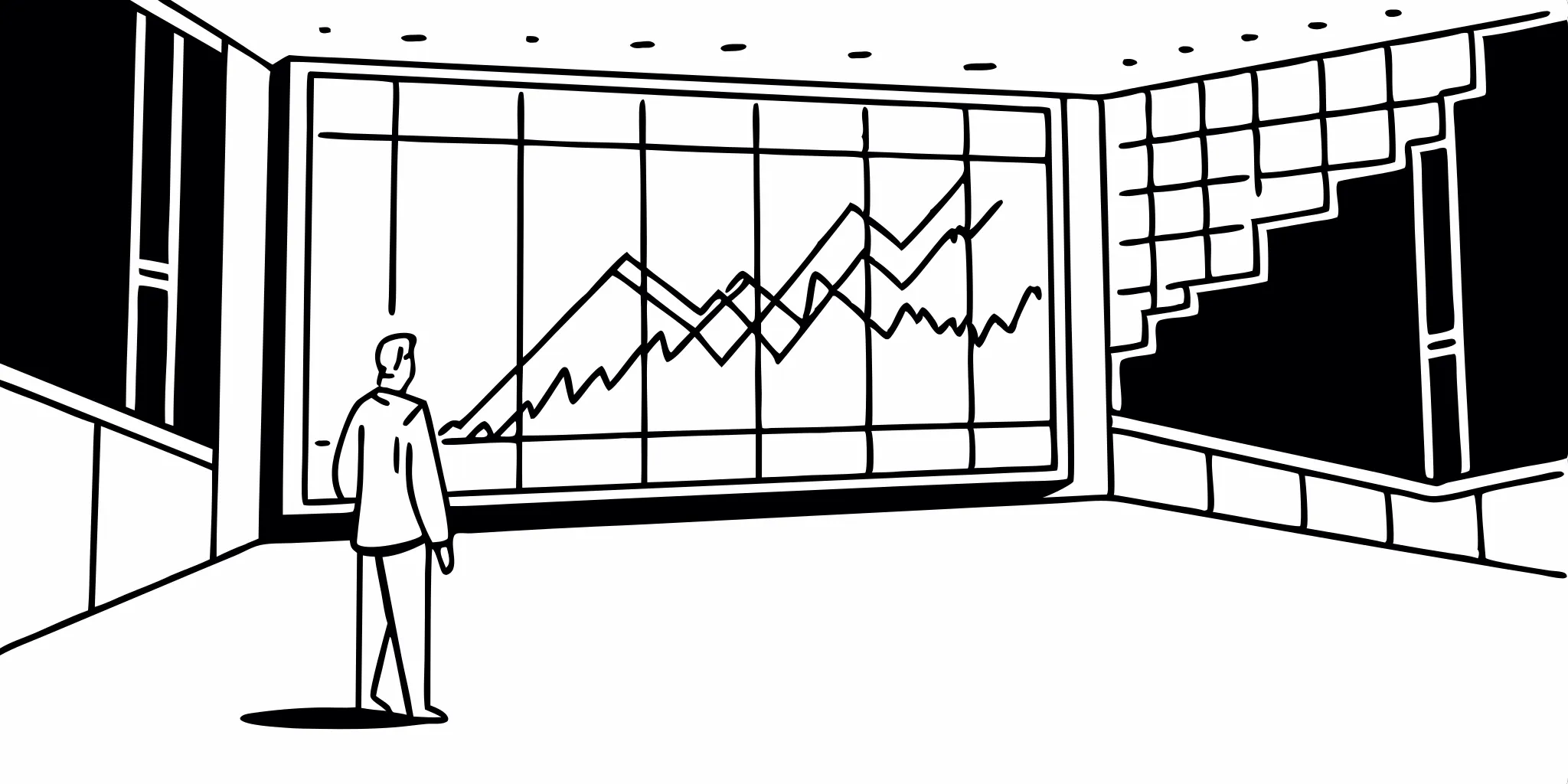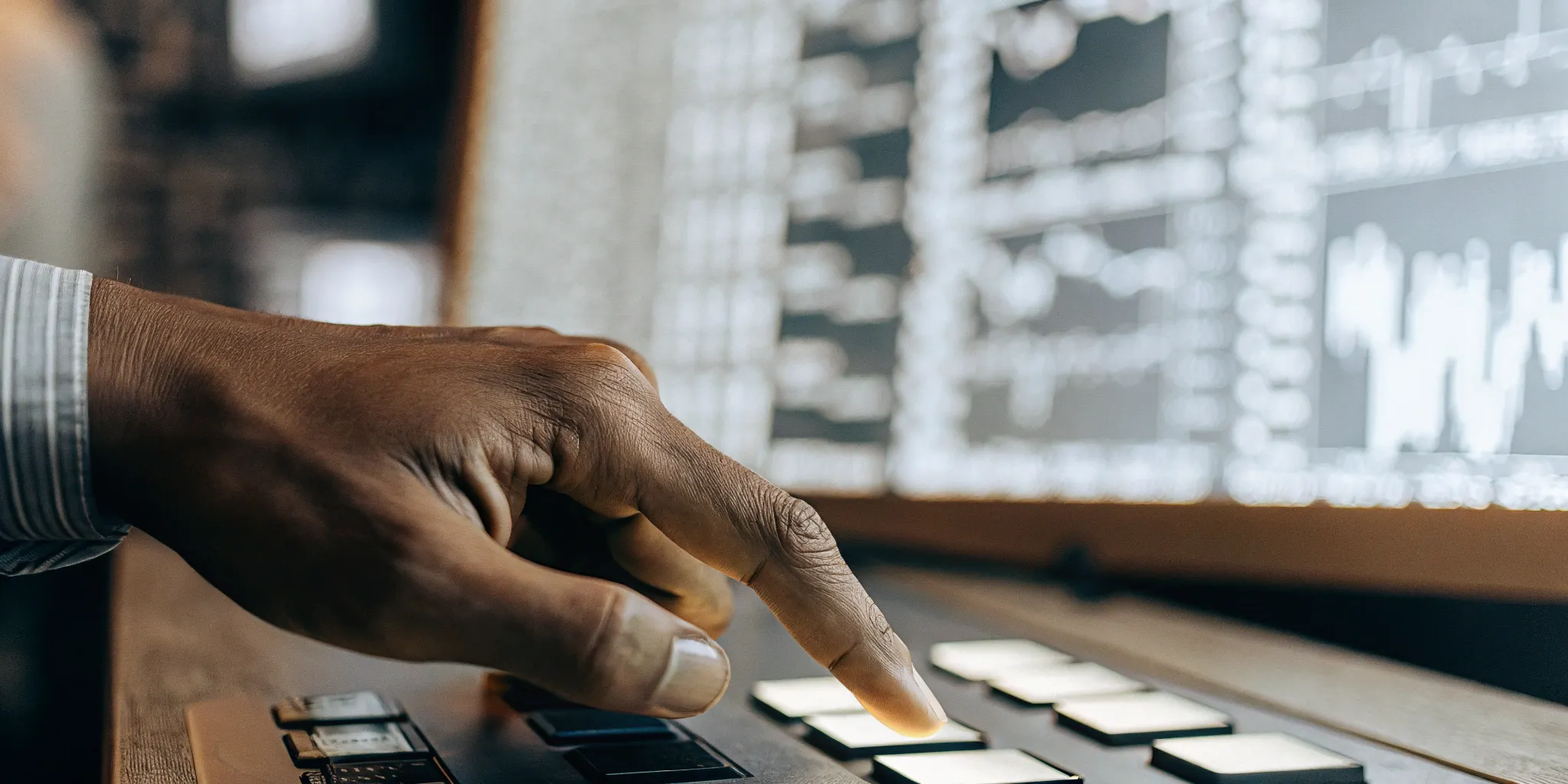The financial markets have always been a dynamic and ever-changing landscape. Today, much of that change is driven by the lightning-fast speed and precision of algorithmic trading. But the history of algorithmic trading is more than just a story of faster computers and complex code; it’s a story of innovation, adaptation, and the constant pursuit of efficiency. From its early roots in the 1970s to the sophisticated AI-powered systems of today, algo-trading has reshaped how we interact with financial markets. This article will explore the key milestones, technological leaps, and regulatory hurdles that have defined the history of algorithmic trading, providing a comprehensive overview for anyone interested in understanding this powerful force in modern finance.
Key Takeaways
- Algorithmic trading is constantly evolving: From basic rule-based systems to complex AI-driven strategies, the technology behind automated trading has rapidly advanced, increasing market efficiency and access for investors.
- Key events and regulations have shaped the landscape: The SEC’s approval of electronic exchanges, the 2010 Flash Crash, and regulations like MiFID II have influenced how algorithmic trading operates, highlighting the importance of balancing innovation with market integrity.
- Emerging technologies will drive the future: Big data, alternative data, advanced AI, and even quantum computing are poised to transform algorithmic trading, offering new opportunities and challenges for investors and market participants.
What is Algorithmic Trading?
Algorithmic trading, also known as automated trading, uses pre-programmed instructions to execute orders based on factors like price, time, and volume. It’s faster than human trading and minimizes market impact. When large trading orders hit the market, they can cause significant price shifts—algorithms cleverly break down these orders into smaller portions, making their entrance more subtle and reducing any dramatic influence on asset price. Many large financial institutions and a growing number of individual traders rely on algorithmic systems for their speed and efficiency.

Definition and Mechanics
Unlike manual trading where a human makes all the decisions, algorithmic trading automates the process. Think of it as setting up a sophisticated set of rules for your trading, then letting a computer execute those rules flawlessly and at speeds no human could match. This removes emotional biases and allows for precise, consistent execution. These “rules” consider a wide range of factors, from basic price movements to complex technical indicators and even news sentiment. This automation allows traders to react to market changes in real-time, capitalizing on opportunities that might be missed with manual trading.
Key Components of Algorithmic Trading Systems
Algorithmic trading systems are designed to process vast amounts of market data and execute trades incredibly fast, often within milliseconds. This speed and efficiency provide unparalleled scalability, enabling traders to manage multiple markets, instruments, and strategies simultaneously. Beyond speed, these systems often incorporate advanced techniques like machine learning to identify hidden patterns and correlations that traditional rule-based strategies might miss. Leveraging trading history is also essential, as analyzing past performance helps refine models and validate assumptions. Testing algorithms using historical market data before live deployment allows for further refinement and risk mitigation, ensuring the strategy performs as expected in various market conditions. Many modern platforms now offer autotrading capabilities as well, allowing users to deploy these algorithms automatically, reducing the need for manual intervention and improving consistency in trade execution.
How Did Algorithmic Trading Begin?
Algorithmic trading, often shortened to algo-trading, isn’t as new as you might think. While it’s become synonymous with rapid-fire trades and complex computations, its roots lie in a simpler time, long before the internet as we know it. Let’s explore how this innovative approach to trading got its start.
Early Innovations (1970s-1980s)
The earliest seeds of algorithmic trading were sown back in 1949 with the creation of the first rule-based trading fund. This was followed by Markowitz’s groundbreaking portfolio theory in the 1950s, which provided a mathematical framework for assembling a diversified portfolio. The 1960s brought early attempts to use computers for arbitrage opportunities, paving the way for more sophisticated applications. The development of electronic communication networks, or ECNs, like Instinet in 1967 and Nasdaq in 1971, laid the groundwork for electronic trading, setting the stage for algo-trading to emerge. The launch of Renaissance Technologies in 1982 marked a significant milestone, demonstrating the potential of quantitative investment strategies.
The Shift from Manual to Electronic Trading
The 1990s witnessed a significant shift from manual to electronic trading. More complex programs emerged, capable of analyzing market data to identify profitable trading opportunities. As computers and electronic trading systems gained prominence, high-frequency trading, or HFT, began to take shape. HFT uses powerful computers to execute a large number of trades in fractions of a second. The SEC’s authorization of electronic exchanges in 1998 was a pivotal moment, propelling the growth of algorithmic trading. The subsequent move to decimal pricing in US markets in 2001 further enhanced market efficiency, creating an environment even more conducive to algo-trading strategies.
What Technological Advances Drove the Evolution?
Algorithmic trading wouldn’t exist without the continuous evolution of technology. Let’s explore some key advancements that propelled it forward.
The Rise of High-Frequency Trading (HFT)
High-frequency trading (HFT) emerged as a dominant force, leveraging powerful computers to execute massive volumes of trades at lightning speed. This shift toward electronic trading platforms increased not only speed but also efficiency, allowing firms to profit from tiny price fluctuations. HFT algorithms analyze market data, identify fleeting opportunities, and execute trades in milliseconds—often making thousands of trades per second. This speed and precision gave HFT firms a significant edge.
Integrating Machine Learning and AI
The integration of machine learning and AI marked a turning point. These technologies empower sophisticated algorithms to analyze vast datasets, identify complex patterns, and make predictions about future market movements. AI-driven algorithms can adapt to changing market conditions and refine their strategies over time, leading to more accurate and efficient trading decisions. This shift toward data-driven trading has opened up new possibilities for optimizing returns and managing risk.
The Impact of Electronic Communication Networks (ECNs)
Electronic Communication Networks (ECNs) played a crucial role in the growth of algorithmic trading. The 1998 authorization of electronic exchanges by the SEC was a pivotal moment. ECNs, like Instinet and Island, created a new era by connecting buyers and sellers directly, bypassing traditional exchanges. This facilitated faster, more efficient trade execution and greater market transparency. ECNs also fostered competition among trading venues, leading to tighter spreads and lower transaction costs for investors.
How Did Regulations and Market Structure Change Algorithmic Trading?
Algorithmic trading’s evolution is deeply intertwined with regulatory changes and shifts in market structure. These factors have both fueled its growth and imposed necessary controls. Let’s explore some key milestones:
SEC Approval of Electronic Exchanges (1998)
The SEC’s approval of electronic exchanges in 1998 was a watershed moment. This decision opened the door for automated trading systems, enabling traders to execute orders much faster and more efficiently than traditional methods. This shift dramatically lowered the barrier to entry for computerized trading, fostering innovation and competition. It also laid the groundwork for the high-speed, high-volume trading we see today. This automation allowed firms like FN Capital to develop sophisticated algorithms like FAST AI, capable of executing thousands of trades per month.
Decimalization and Its Effects (2001)
The move to decimal pricing in 2001, known as decimalization, further reshaped the trading landscape. By switching from fractions to decimals, the minimum price increment shrank significantly. This seemingly minor change had a profound impact on algorithmic trading, allowing algorithms to react more swiftly and precisely to price fluctuations. This increased market efficiency and further accelerated trade execution, tightening spreads. For strategies like FN Capital’s FAST AI, which focuses on high-frequency trading in the EUR/USD pair, decimalization was crucial for maximizing profitability.
Regulations After the 2008 Financial Crisis
The 2008 financial crisis and the subsequent “flash crash” of 2010 prompted a significant reassessment of trading regulations. The flash crash, partially attributed to algorithmic trading, exposed vulnerabilities in market structure. This led to the implementation of circuit breakers designed to halt trading during periods of extreme volatility, providing a crucial safeguard against cascading market declines. Regulations like Reg NMS, introduced in 2007 to promote market fairness and transparency, also inadvertently favored high-frequency trading (HFT) strategies. At FN Capital, we recognize the importance of these regulations. Our Dynamic Algorithmic Risk Tool (DART) works in concert with these market safeguards to ensure responsible and risk-managed trading. The interplay between regulation and market structure continues to shape the development and deployment of algorithmic trading systems, influencing how firms like ours operate and innovate.
What Key Events Shaped Algorithmic Trading?
Several key events have significantly influenced the development and regulation of algorithmic trading, shaping the landscape we see today. These events highlighted both the potential and the pitfalls of automated trading systems, prompting regulatory responses and changes in market structure.
The 2010 Flash Crash and Its Aftermath
The 2010 Flash Crash served as a stark reminder of the power and potential risks of automated trading. A massive, algo-executed sale of $4.1 billion triggered a chain reaction, temporarily wiping out nearly a trillion dollars in market value. This dramatic plunge exposed vulnerabilities and raised concerns about the speed and interconnectedness of these systems. The Flash Crash prompted investigations and regulatory reviews, ultimately leading to circuit breakers and other safeguards to prevent similar events. These new rules aimed to increase market stability by pausing trading during periods of extreme volatility. This gives investors time to react and prevents cascading sell-offs.
The Introduction of Dark Pools
Dark pools emerged as a way for institutional investors to trade large blocks of shares discreetly. These private exchanges operate outside of public view, allowing participants to execute trades without revealing their intentions to the broader market. This minimizes market impact and offers greater control over pricing, particularly for large orders. While dark pools offer advantages in terms of price discovery and execution, they have also faced scrutiny regarding transparency and potential for unfair practices. Regulators have worked to ensure fair access and prevent information leakage that could disadvantage other market participants.
MiFID II and Its Global Impact
The implementation of MiFID II in January 2018 marked a significant step in the regulation of algorithmic trading. This European Union directive aimed to increase transparency and investor protection across financial markets. MiFID II introduced stricter rules for trading venues, including requirements for algorithmic trading systems and increased reporting obligations. These regulations impacted how trading is conducted not only in Europe but also globally, as firms operating internationally adapted to the new standards. The focus on transparency and oversight has continued to shape the evolution of algorithmic trading, pushing for greater accountability and responsible use of automated systems.
How Have Trading Strategies Evolved?
From Simple Rules to Complex Algorithms
Algorithmic trading (algo-trading), using computer programs to execute trades, began gaining traction in the late 1980s and early 1990s with the rise of the internet. The SEC’s decision to allow electronic exchanges in 1998 was a pivotal moment, opening the door for wider adoption. Early algorithms were fairly straightforward, often built on rule-based systems. A simple example would be: “if a stock price drops below X, then sell.” These initial programs aimed to automate basic trading actions and remove some human emotion from the equation.
As technology progressed, algorithms became more sophisticated. Faster computers, improved networking, and advanced data analysis techniques enabled more intricate strategies. Simple if-then rules evolved into complex mathematical models that incorporated vast amounts of data and intricate calculations. This evolution continues, with modern algorithms using machine learning and AI to adapt to dynamic market conditions. This constant pursuit of speed creates both opportunities and challenges, including the risk of market instability.
Popular Strategies and Their Development
Early algo-trading often used strategies like trend following—buying assets increasing in value and selling those decreasing. Mean reversion strategies, conversely, bet on prices returning to their average after large swings. Other common approaches included spread betting and arbitrage, seeking to profit from small price differences between markets or assets.
Several key developments paved the way for these advancements. Early rule-based trading systems appeared as early as 1949, followed by the influential Markowitz Model in 1950. The 1960s saw the rise of computer-based arbitrage, while the development of electronic communication networks (ECNs) like Instinet (1967) and Island (1996) further propelled the shift toward electronic trading. The launch of the Nasdaq in 1971 was another key milestone, demonstrating the potential of electronic marketplaces. Today, algorithmic trading encompasses a broad spectrum of strategies, from pairs trading and market making to statistical and event arbitrage, each designed to capitalize on different market behaviors. High-frequency trading (HFT), a subset of algo-trading known for its extreme speed and volume, has also become a major player in modern markets.
How Has Algorithmic Trading Been Adopted Globally?
Spread Across Markets and Regions
Algorithmic trading’s growth has reshaped financial markets worldwide. Its rise began in the late 1980s and early 1990s, gaining momentum with the expansion of the internet. The SEC’s 1998 decision to authorize electronic exchanges marked a turning point, accelerating mainstream adoption. By 2013, algorithms handled about 70% of US equities trades, and that number has only grown. More recent data shows roughly 92% of forex trading now uses algorithms. This widespread use is supported by electronic communication networks (ECNs) like Instinet and Island, which have streamlined trade execution across various markets.
Impact on Cross-Border Trading
Beyond individual markets, algorithmic trading has significantly impacted cross-border transactions. These systems efficiently process vast datasets and execute trades incredibly fast, often within milliseconds—a capability often referred to as FAST AI pricing. This speed and efficiency allow traders to manage multiple markets and instruments at once, optimizing strategies across different time zones. Compared to traditional investing, where decisions are typically slower and more manual, AI-driven trading offers a competitive edge by automating analysis, minimizing lag, and capitalizing on fleeting opportunities. As a result, algorithmic trading has fueled a surge in cross-border activity, enabling more efficient global capital allocation and driving AI trading profits for firms that can harness this technology. The ongoing evolution of these systems means deeper integration with global markets, leading to seamless cross-border transactions and increased liquidity across regions.
What Are the Current Trends and Future of Algorithmic Trading?
The world of algorithmic trading is constantly evolving. New technologies and regulatory changes create a dynamic landscape. Let’s explore some key trends shaping the future of this exciting field.
Big Data and Alternative Data in Trading
The sheer volume of data available today is staggering. Algorithmic trading increasingly leverages “big data,” including massive datasets of market information, to fuel more sophisticated trading decisions. We’re also seeing the rise of “alternative data,” such as social media sentiment, satellite imagery, and even weather patterns, to gain a unique edge. For example, news-based trading—using news sentiment to trigger trades—is gaining traction. These unconventional data sources offer new insights into market behavior and can inform more nuanced algorithmic strategies.
Ongoing Regulatory Considerations
Regulation plays a vital role in maintaining market integrity and mitigating the risks associated with algorithmic trading. The 2010 Flash Crash, partially attributed to high-frequency trading, highlighted the need for robust oversight. Regulators have since implemented various rules to prevent similar events and ensure market stability. These regulatory changes continue to shape the development and deployment of algorithmic trading strategies, impacting everything from trade execution speeds to risk management protocols.
Ethical Implications and Market Fairness
As algorithms become more complex, questions around ethics and market fairness naturally arise. The “black box” nature of some algorithms can make it difficult to understand their decision-making, raising concerns about transparency and accountability. Discussions around potential market manipulation through techniques like spoofing (placing deceptive orders) and quote stuffing (flooding the market with orders) are ongoing. Finding the right balance between innovation and responsible use is crucial for the long-term health and sustainability of algorithmic trading.
What Emerging Technologies Will Impact Algorithmic Trading?
Algorithmic trading is a constantly evolving field, and emerging technologies promise to reshape markets and strategies. Let’s explore some of the key advancements on the horizon.
Next-Generation AI and Machine Learning
Artificial intelligence and machine learning already play significant roles in algorithmic trading. We’re seeing increasingly sophisticated applications of AI for tasks like liquidity detection and management, which is crucial for executing large orders efficiently. Major firms use AI-powered tools to analyze real-time market conditions and optimize the timing and pricing of trades. AI also helps analyze micro-level market data to forecast short-term movements and dynamically adjust trading strategies. As AI and machine learning models become more sophisticated, we can expect even greater precision and speed in algorithmic trading execution.
Quantum Computing in Trading Algorithms
While still nascent, quantum computing has the potential to revolutionize fields like algorithmic trading. The processing power of quantum computers could allow us to tackle complex market scenarios with unprecedented speed. Emerging research shows that quantum-enhanced models can process information significantly faster than classical computing architectures, creating new possibilities in market analysis and prediction. Imagine processing vast datasets and running complex simulations in a fraction of the time currently required—this is the potential of quantum computing for the future of algorithmic trading.
Related Articles
- Futures Trading Algorithms: The Ultimate Guide – FN Capital
- AlgoTrade: The Ultimate Guide to Algorithmic Trading – FN Capital
Frequently Asked Questions
Is algorithmic trading only for big institutions?
Not at all! While large firms have used algorithmic trading for a while, the technology is increasingly accessible to individual investors. Platforms like FN Capital offer user-friendly ways to leverage the power of AI-driven algorithms, regardless of your trading experience.
How does algorithmic trading manage risk?
Risk management is a core component of any sound algorithmic trading system. Advanced algorithms, like FN Capital’s DART, continuously monitor market conditions and adjust trading parameters in real-time. This dynamic approach helps protect capital and optimize returns even during market fluctuations.
What’s the difference between algorithmic trading and high-frequency trading (HFT)?
High-frequency trading (HFT) is a specialized type of algorithmic trading characterized by extremely rapid trade execution. While all HFT is algorithmic, not all algorithmic trading is HFT. Many algorithmic strategies focus on longer-term trends and don’t require the lightning-fast execution speeds associated with HFT.
What are the advantages of using a platform like FN Capital for algorithmic trading?
FN Capital offers a unique combination of sophisticated AI-powered algorithms, a proven track record, and a transparent approach. Our focus on the EUR/USD pair, combined with our DART risk management system, provides a compelling solution for investors seeking consistent, automated returns. The 100-day money-back guarantee also allows you to experience the platform risk-free.
What’s the future of algorithmic trading?
The future of algorithmic trading is bright, driven by continuous technological advancements. We’re seeing increasing integration of AI and machine learning, enabling more sophisticated and adaptive strategies. Emerging technologies like quantum computing hold the potential to further revolutionize the field, unlocking even greater speed and analytical capabilities.





